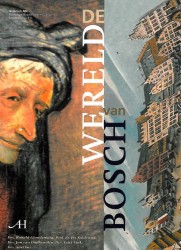Vink/Vos 2001
“Leven in de stad van Jheronimus Bosch” (Ester Vink and Aart Vos) 2001
[in: Jan van Oudheusden and Aart Vos (eds.), De Wereld van Bosch. Historisch ABC – Archeologie Bouwhistorie en Cultuur ’s-Hertogenbosch – volume 4, Adr.Heinen, ’s-Hertogenbosch, 2001, pp. 26-49]
The authors report some general facts about everyday life in ’s-Hertogenbosch circa 1500: the population, the municipality, the economy and the annual fairs, the guilds, the processions and festivities, the diseases and the poverty, the relations with the Burgundians and the wars with Guelderland.
- In the second half of the fifteenth century ’s-Hertogenbosch had circa 16.000 inhabitants, 100 years later the population ran up to 20.000. Apart from Utrecht ’s-Hertogenbosch was the largest city of what is now called the Netherlands.
- Some citizens had received a lower ordination but were not really reckoned with the clergy. Bosch was one of them.
- The ’s-Hertogenbosch knives were a popular product, even in a country as far as Spain. Bosch painted some knives marked with the mysterious capital ‘M’.
- Bosch’s neighbour, Lodewijk Beys, undertook pilgrimages to Jerusalem in 1500 and 1513.
- The ’s-Hertogenbosch painters (together with the carvers, embroiderers, stained-glass artists and carpet weavers) only got their own guild in 1546, with their own rules and regulations. In the archival sources Bosch is only called ‘master’ after his death. Artists usually worked for patrons.
- Important events were the Procession of Our Lady (the Sunday after June, 24), other smaller processions, Carnival, the festivities of the Civic Guard and the feasts of the Church.
- A number of bathing houses (badstoven) that were brothels at the same time, could be found in the Stoofstraat.
- In 1496 there is an outbreak of the Spanish smallpox (also called ‘St Job’s passion’). In 1516 there is a pleurisy epidemic. Bosch and Jan Heyns both died in that year…
- As a member of the well-to-do bourgeoisie Bosch will have considered beggars antisocial creatures.
- Mary of Burgundy and Maximilian of Austria made a Joyous Entry into ’s-Hertogenbosch that will certainly have been witnessed by Bosch. The cavalcade in The Haywain reminds us of princely parades.
- ’s-Hertogenbosch functioned as a front-city and sally-port against Guelderland, the old duchy that opposed its annexation to the Burgundian federation. The Peace Treaty of Venlo in 1543 put an end to this.
This contribution tells nothing new, but all known facts and data have been brought together in a neatly arranged way.
[explicit]
